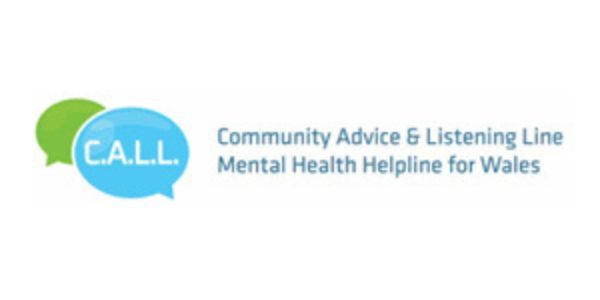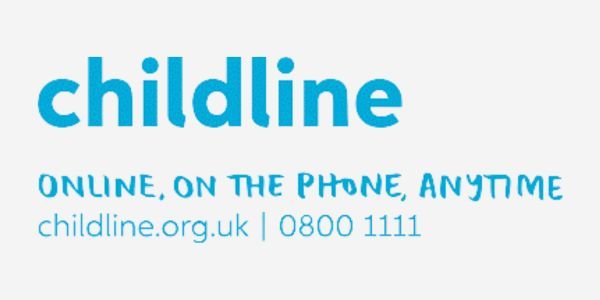Croup is a common childhood illness that can cause a distinctive, bark-like cough. It can also cause difficulty breathing which can be frightening for both you and your child.
Croup
If your child has any of the following:
- Is going blue around the lips
- A harsh breath noise as they breathe in (stridor) present all of the time (even when they are not upset)
- Has pauses in their breathing (apnoeas) or has an irregular breathing pattern
- Is too breathless to talk / eat or drink
- Becomes pale, mottled and feels abnormally cold to touch
- Becomes extremely agitated (crying inconsolably despite distraction), confused or very drowsy (difficult to wake)
- Develops a rash that does not disappear with pressure (the ‘Glass Test’)
- Is under 1 month of age with a temperature of 38°C /100.4°F or above
You need urgent help.
Go to the nearest Hospital Emergency (A&E) Department or phone 999
If your child has any of the following:
- Has laboured/rapid breathing or they are working hard to breath – drawing in of the muscles below their lower ribs, at their neck or between their ribs
- A harsh breath noise when they breathe in (stridor) present only when they are upset
- Seems dehydrated (sunken eyes, drowsy or no urine passed for 12 hours)
- Is becoming drowsy (excessively sleepy)
- Drooling and has difficulty swallowing saliva
- Is 1-3 months of age with a temperature of 38°C /100.4°F or above or 3-6 months of age with a temperature of 39°C / 102.2°F or above (but fever is common in babies up to 2 days after they receive vaccinations)
- Seems to be getting worse or if you are worried
You need to contact a doctor or nurse today.
Please ring your GP surgery or contact NHS Wales 111
If none of the features in the red or amber boxes above are present
Self care
Continue providing your child’s care at home. If you are still concerned about your child, ring your GP surgery or contact NHS Wales 111
What is croup?
Croup (also called laryngotracheobronchitis) can be caused by several viruses which affect the airways including the voice box (larynx), windpipe (trachea) and lungs (the bronchi) causing them to swell and become narrower. It usually affects babies and young children between the ages of one and three years old. Some children have croup two or more times in their childhood.
What are the symptoms of croup?
Your child may have:
- A cough – the cough is usually harsh and barking. This ‘croupy cough’ is due to inflammation and swelling of the vocal cords in the voice box (larynx).
- Noisy breathing symptoms – the inflammation can narrow the voice box (larynx) and windpipe (trachea) and cause an extra noise called a stridor. This noise is normally heard on breathing in.
- Breathing may become difficult if the narrowing becomes worse.
- Other symptoms – these may include a runny nose, hoarseness and a sore throat. Croup may follow a cold but can also appear without any earlier illness. Children may also experience a high temperature (fever), general aches and pains and be off of their food.
- The symptoms of croup appear worse at night. They usually peak after one to three days and then improve. A mild but irritating cough may persist for a further week or so.
How can I help my child?
- Stay calm in order to reassure your child – children with croup may become distressed and crying may make their symptoms worse.
- Sit your child upright on your lap if their breathing is noisy or difficult. Let them find the most comfortable position.
- Encourage your child to drink cool drinks regularly (little and often) to help soothe their throat and keep them hydrated.
- Give your child paracetamol or ibuprofen liquid, following the instructions on the bottle.
- If their temperature is high, dress them in cool, loose clothes (if any) and don’t use anything warmer than a sheet to cover them in bed.
- Stay with your child, or check him or her regularly, as you need to know if the symptoms are getting worse.
- Some people find that taking their child outside in the cool, fresh air helps to relieve their symptoms
This guidance is written by healthcare professionals from across Hampshire, Dorset and the Isle of Wight.
NHS 111 Wales
Website: NHS 111 Wales
NHS 111 Wales (Option 2) telephone service is available 24/7 and can be used for urgent mental health advice and support.
Meic
Website: www.meiccymru.org
Meic is the helpline service for children and young people up to the age of 25 in Wales. Chat online, freephone 080880 23456, or text 84001.
C.A.L.L. Community Advice Listening Line
Website: www.callhelpline.org.uk
Provides a confidential mental health listening and emotional support line which is open 24/7. Call 0800 132 737 or text ‘help’ to 81066.
Shout
Website: www.giveusashout.org
Text ‘shout’ to 85258 anytime, day or night.
Childline
Website: www.childline.org.uk
If you’re under 19 you can confidentially call, chat online or email about any problem big or small.
Samaritans
Website: www.samaritans.org/wales/samaritans-cymru/
Call 116 123 free, anytime, day or night.
Papyrus
Website: www.papyrus-uk.org
Are you, or is a young person you know, not coping with life? For confidential suicide prevention advice contact HOPELINEUK. We are open 9am–midnight every day.
Campaign Against Living Miserably (CALM) for men
Website: www.thecalmzone.net
Need help? Call our helpline 5pm-midnight, 365 days a year on 0800 58 58 58.
DAN 24/7 - Wales Drug and Alcohol Helpline
Website: www.dan247.org.uk/
Freephone 0808 808 2234, or text DAN to 81066.
NHS 111 Wales
Website: NHS 111 Wales
NHS 111 Wales (Option 2) telephone service is available 24/7 and can be used for urgent mental health advice and support.
Meic
Website: www.meiccymru.org
Meic is the helpline service for children and young people up to the age of 25 in Wales. Chat online, freephone 080880 23456, or text 84001.
C.A.L.L. Community Advice Listening Line
Website: www.callhelpline.org.uk
Provides a confidential mental health listening and emotional support line which is open 24/7. Call 0800 132 737 or text ‘help’ to 81066.
Shout
Website: www.giveusashout.org
Text ‘shout’ to 85258 anytime, day or night.
Childline
Website: www.childline.org.uk
If you’re under 19 you can confidentially call, chat online or email about any problem big or small.
Samaritans
Website: www.samaritans.org/wales/samaritans-cymru/
Call 116 123 free, anytime, day or night.
Papyrus
Website: www.papyrus-uk.org
Are you, or is a young person you know, not coping with life? For confidential suicide prevention advice contact HOPELINEUK. We are open 9am–midnight every day.
Campaign Against Living Miserably (CALM) for men
Website: www.thecalmzone.net
Need help? Call our helpline 5pm-midnight, 365 days a year on 0800 58 58 58.
DAN 24/7 - Wales Drug and Alcohol Helpline
Website: www.dan247.org.uk/
Freephone 0808 808 2234, or text DAN to 81066.
- Try to stay calm.
- Tell them you are there for them and that you are not upset or angry.
- Tell them you are pleased they have told you they are having thoughts of harming themselves and that you are able to help them through this time.
- Listen to what they are saying even if they are venting anger or other negative emotions at you.
- Listen without interrupting.
- Validate their thoughts and feelings – they are real and important.
- Try to be emotionally available and present for your child.
- Once things appear to be settling please encourage your child to relax as the day/ evening progresses and make some suggestions for things you can do together to distract them from their thoughts (see below for some ideas).
- Try to proactively manage any potential conflicts or arguments within your immediate environment.
- Be mindful of excessive use of mobile devices but that young people really need to feel connected to others at times of distress.
If you are concerned that your child/ young person is at risk of harming themselves, please ensure the following:
- All medications (prescribed/ over the counter/ vitamins) are removed and/ or locked in a strong lockable medical box or locked cupboard. Medication needs to be stored in this way in all houses where the young person stays, including grandparents, foster carers, step parents and residential homes.
- All sharp objects, such as knives and razor blades, to be removed and/ or stored securely.
- Ensure the young person has not got a stock of medication or sharp objects in their room or amongst their property.
- Other environmental risks in your home should be considered, e.g. removing ropes, ties, dressing gown ties.
- Do not allow your child/ young person to go out alone or with friends during times of distress and when they are voicing thoughts of self-harm or suicide.
- Monitor your child/ young person’s mood and behaviour closely.
- Increase your presence and supervision of your child at home, if needed remaining awake or checking on them during the night.
- Ask them about thoughts of self-harm and suicide.
- Look out for any warning signs in your child/ young person that they might be struggling.
- Distract yourself - watch a film or TV programme, play a computer game that absorbs your mind, or read a book you’re really interested in
- Get creative – drawing, mindful colouring, taking photos, listening to music, singing
- Get moving – walk, run, dance, do an exercise or yoga video
- Comfort yourself – have bubble bath or shower, eat something you like, stroke a pet, cuddle up tightly in a blanket, rock/ hug yourself, spray a favourite perfume
Alternatives to self-harm when the urge to harm is very strong:
- Hold ice in your hand for as long as you can
- Step under a cold shower briefly
- Run your hands under cold water
- Snap an elastic band against your wrist
- Hit a cushion against the wall or bed
- Punch a punch bag or pillow
- Go for a fast paced walk or run up and down the stairs several times
- Tear or scrunch up paper













